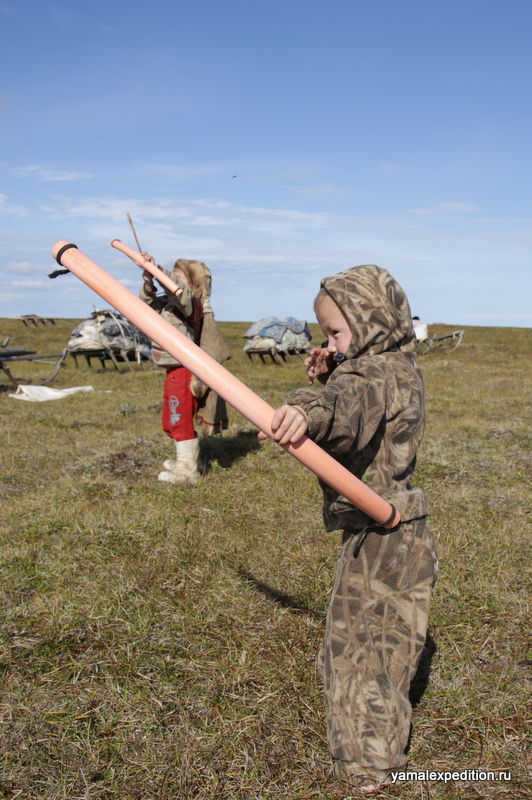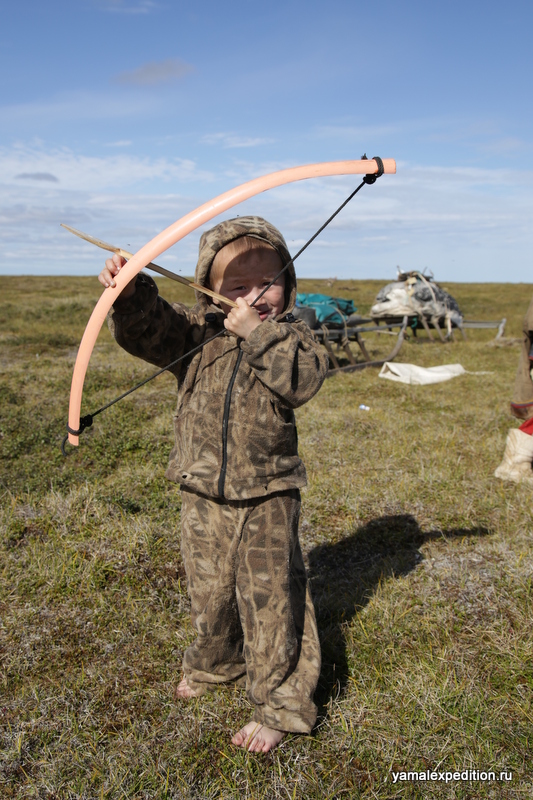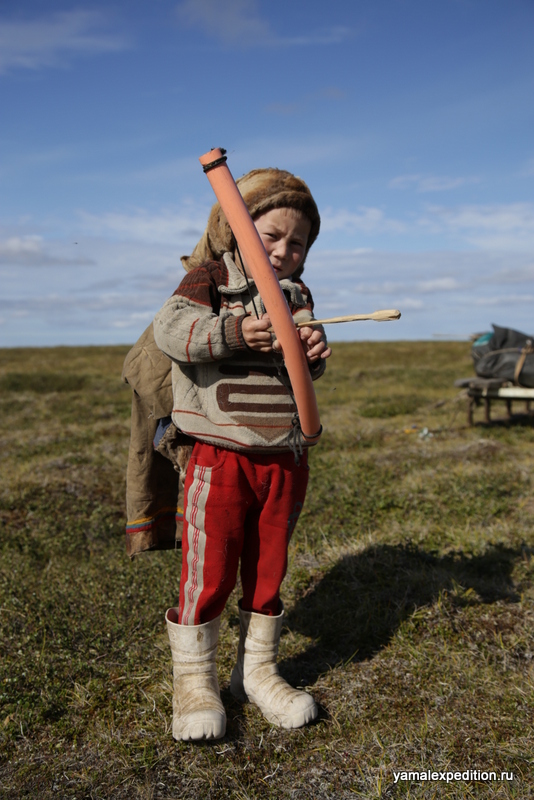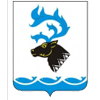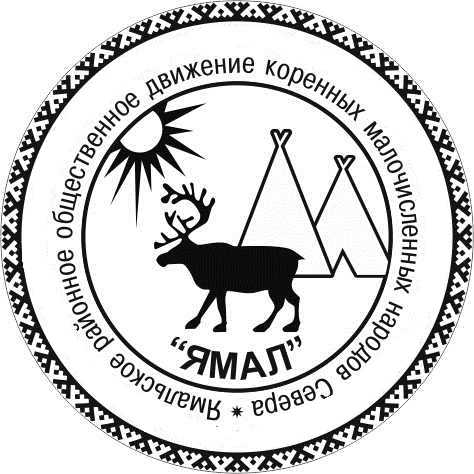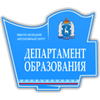Hello everyone! We haven't publish our diary notes for a long time, because we travelled to Salekhard. We want to share with you some of August 2015 events and pictures anyway.
On August 1st 2015 we arrived at our 33rd encampment: N 70º12'28,6'' E 067º53'21,3''. The linear distance from the last encampment - 3,9 kms. During this kaslanie we crossed Yorya-yaha river - not a deep, narrow river with the cliffy banks. Usually Nenets try to find place with flat shores, for allow long argishes to enter water easy and same come out of the river on other shore. But this time it was impossible. Herders choose for crossing the wastest place of the river (about 8 meters), and decided to wasten a crossing place with spades. Vladimir led argishes to the water, threw rope across the river to Yaroslav and then Yaroslav pulled the rope to let reindeers cross the river and arrive at our bank.
While argishes were moving to the new encampment's location, some of the men moves to Yorya-yaha river estuary - we place where Yorya-Yaha fall into Yumba-yaha river. There they speaded fish nets and in just several hours have cought fish for all four chums. For the first time we saw humpback salmon among the catch. It's interesting that the Nenets used to so called white fish (muksun, broad whitefish and other ciscos/whitefishes, don't like humpback salmon that much. They are really ironical to "lutsa" (Russians in a waste sence of the word) who are interested in red salmon. Some of our neighbors are sure, that red salmon caviar isn't tasty too. An explanation for such an attiture could be that the Nenets are quite conversative, and red salmon's history in these places isn't long at all, according to some data it starts not earlier that in the beginning of 2000-ies. Another reason is that together with red salmon, seals can enter Mordi-Yaha river, and with the seals white bears as well, which can be dangerous for human.
Our nomadic family slaughtered two reindeers to make winter clothes. There is a lot of meat and fish. We made a underground "fridge" near our chum. Partly we dry fish and meat, make yurik (yukkola).
Crossing over Yorya-yaha river, 01.08.2015.
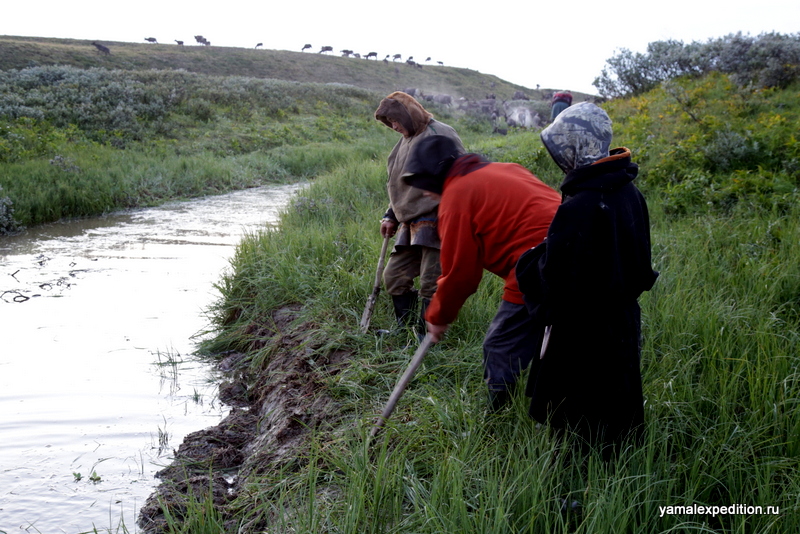
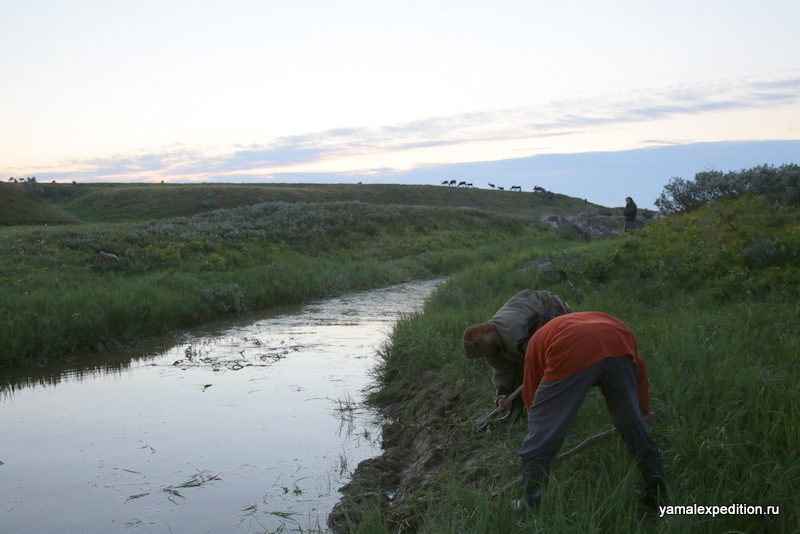
(please press "Читать полностью")
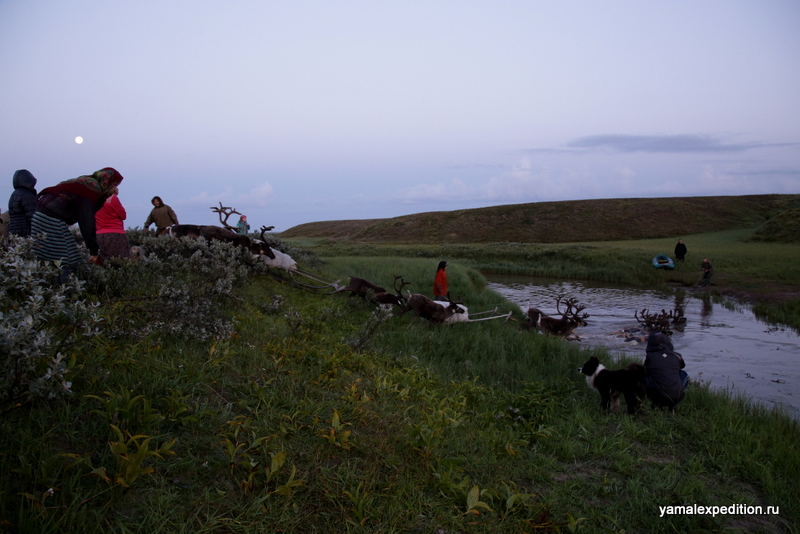
Argishes before crossing the river:
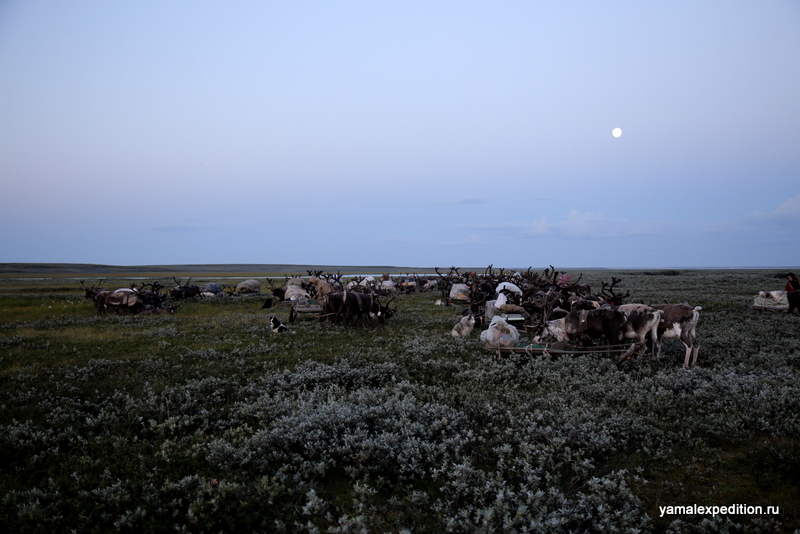
Alexandra during the river crossing:
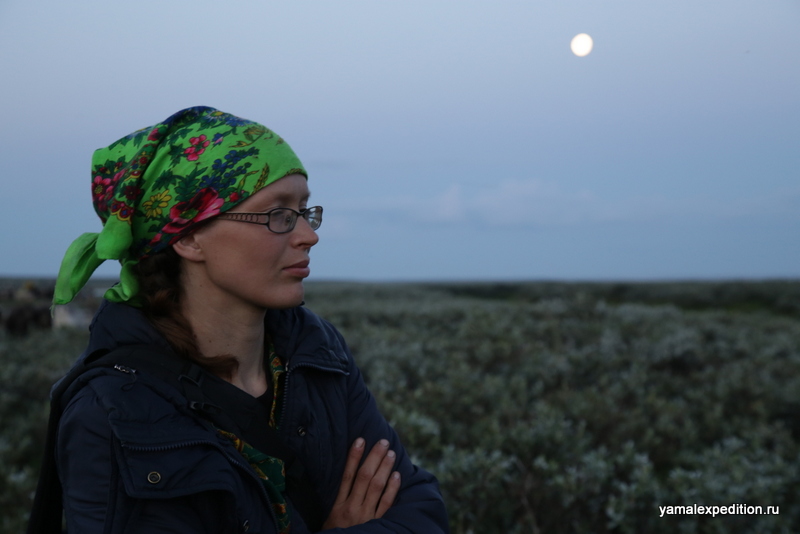
It's rather warm at daytime (about 20ºC), but evenings are quite cold (about 5ºC). People of our nomadic group started to pick cloudberry (Rubus chamaemorus). It's not quite ripe, but if we make jam of it, the taste is even better than of ripe berries.
On August 6th we arrived at our 34th encampment: N 70º13'46,5'' E 067º48'48,9'', linear distance - about 3,8 kms. It was hard for the bulld to move: this summer there were less rains than usual, and nartas don't glade properly on the dry grass. So partly we had to walk near the nartas.
During this stay Albina's sister, her husband and children came to visit us by boat. Then people of our chum (Albina, Kostja and their kids) all made a return visit and celebrates Kostjа's birthday with the family. We stayed alone for two days. Albina and Kostja brought back with them seal's skin with fat. Albina boiled the fat in the cattle, and it became fluid fat (Nenets "яв' юр''"), it suppose to be very useful - and cracklings (Nenes "лахаб''").
Our encampment during one of the foggy nights, 09.08.2015:
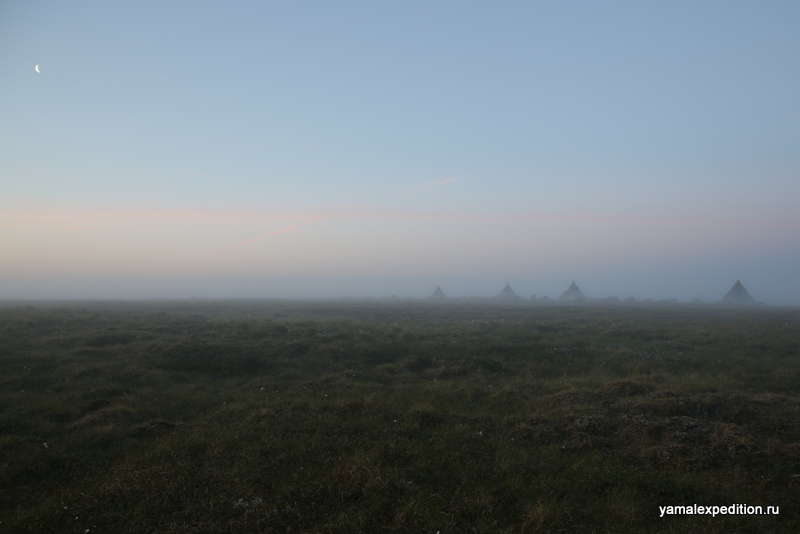
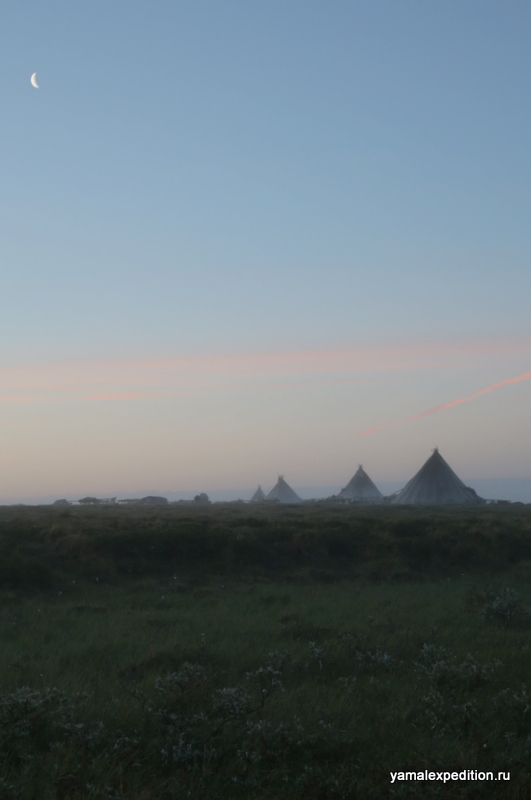
Drying fish inside the chum. 09.08.2015.
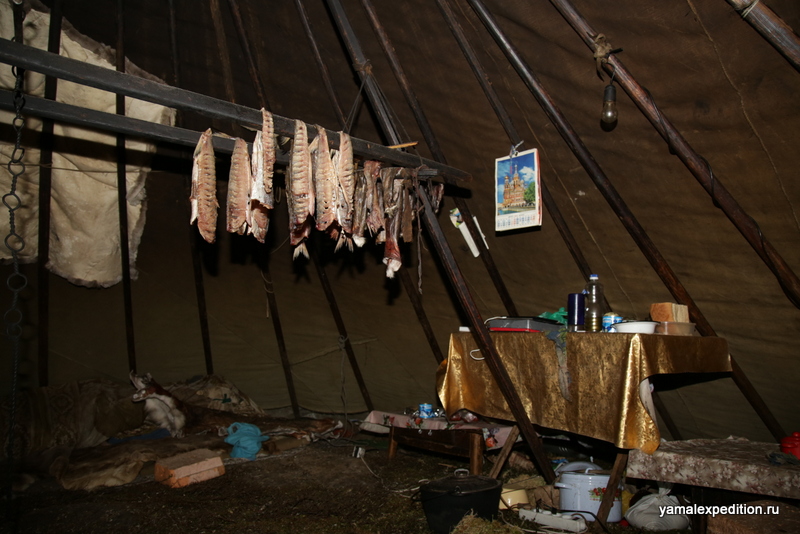
During the visit to Albina's parents, grandmother has made bows to play for the boys:
